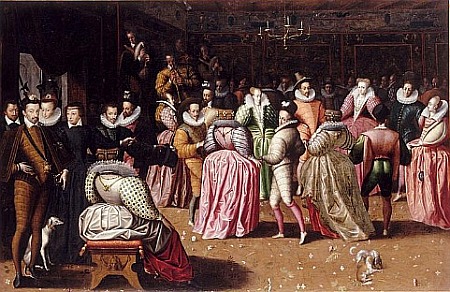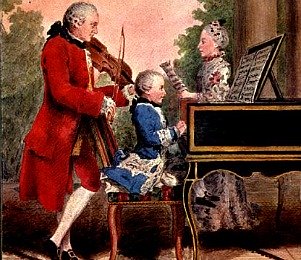Variation as a
technique and
form in Music
Musical works featuring the theme-and-variation form first appeared in the 1500s, although there were earlier isolated examples as far back as the 14th century. One Spanish composer using this form was the vihuelist Luis de Narváez (fl. 1526–49), his "diferencias" as he called them, were some of the earliest examples of this form to be published. A favorite method for creating variations in the Renaissance was called "divisions" : whereby a work begins with a simple rythm with relatively long note values, subsequently in each variation these duration values are "divided" into smaller and smaller values. This principal of developing simple material into more and more elaborate material provides an overall shape to a composition, which is preferable to a set of variations arbitrarily placed together in a sequence. Renaissance vocal music featured two principal variation techniques : contrapuntal variations following the stanzas (verses) of strophic chants; and sets of variations over a single, often quite lengthy, foundation voice in a mass or motet.

Instrumentalists accompanying Renaissance Court dances
employed variation techniques to lessen the drudgery of seemingly endless repetition
Musical works featuring the theme-and-variation form first appeared in the 1500s, although there were earlier isolated examples as far back as the 14th century. One Spanish composer using this form was the vihuelist Luis de Narváez (fl. 1526–49), his "diferencias" as he called them, were some of the earliest examples of this form to be published. A favorite method for creating variations in the Renaissance was called "divisions" : whereby a work begins with a simple rythm with relatively long note values, subsequently in each variation these duration values are "divided" into smaller and smaller values. This principal of developing simple material into more and more elaborate material provides an overall shape to a composition, which is preferable to a set of variations arbitrarily placed together in a sequence.
Francesco Molino's Six Themes with variations, op. 5 - No. 1 in C major
performed by Marek Cupák
Early variation types generally feature a static harmonic and tonal structure. In the mid-18th contury composers further developed the musical structure by an increasing use of harmonic and tonal goal orientation. There was an

dazzled audiences with their
improvisation skills
Luis de Narvaez's Guardame Las Vacas performed
by
Luther Enloe
Variations on a theme is additionally a skill that some performers are able to improvise, this was particularly prevalent in previous eras such as the Baroque. For example the "da capo aria" form featured in operas and oratorios, includes a section in which the singer is expected to improvise such that the music, which is a repeated section, does not sound dull. Composers during the clasical era such as Beethoven and Mozart were also accomplished improvisers and made powerful impressions on their audiences when they improvised. Two well known guitar examples of this form are Fernando Sor's >Introduction and Variations on a Theme by Mozart, Op. 9 , this theme derived from Mozart's opera The Magic Flute, and Mauro Giuliani's Variations of a theme by Handel Op.107, this theme from the final movement of one of Handel's harpsichord suites. An interesting example written for the piano by Mozart is a set of variations on the children's nursery rhyme Twinkle, twinkle little star.
Other Musical forms :
Variations Media |
Mozart's Theme and variations on
|
Fernando Sor's Introduction and Variations
|
Mauro Giuliani's Variations on a Theme from Haendel Op 107 performed by
|





